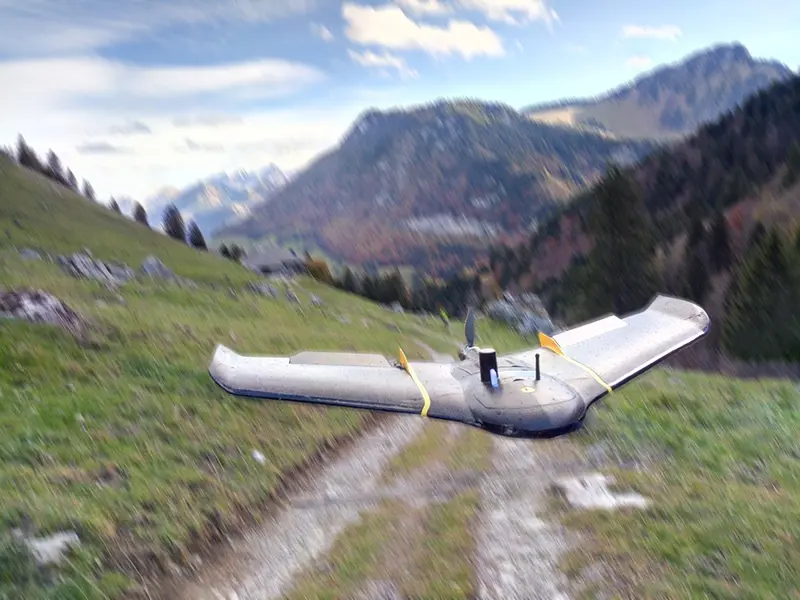
SenseDynamics
Predicting aerodynamics forces from sensor data

Abstract
To advance state-of-the-art Machine Learning capabilities when creating precise surrogate models of transient nonlinear physical phenomena related to aerodynamics with known (quantified probability density function describing it) and traceable uncertainty. Create the capability to reconstruct such complex physical transient phenomenon with a minimum amount of discrete real sensorial input of finite and calibrated precision.
People
Collaborators


Christian joined SDSC in 2019 to design data-driven solutions to support academic research projects. His research interests comprise inference of probabilistic models, with a focus on nonparametric models, and stochastic processes. He holds a PhD in Computational Neuroscience from the Technical University Berlin, Germany, a MSc from the Bernstein Center for Computational Neuroscience Berlin, and a BSc in Cognitive Science from the University of Osnabrück, Germany. During the course of his studies, he additionally conducted research at Khalifa University (UAE), Strathclyde University (UK), and the RIKEN Brain Science Institute and the Kyoto University in Japan. Before joining SDSC, he was an intern at Amazon CoreAI in Berlin.


Natasa is a computer scientist by training, with a Bachelor degree in Computer Science and Engineering and Master degree in Embedded Systems from Ss. Cyril and Methodius University in Skopje, North Macedonia. She finished her doctoral studies in Information Systems at UNIL- HEC Lausanne, under the supervision of Valérie Chavez-Demoilun. During her studies she did an internship at NATO and Facebook AI Research. Her research interest focuses on causal inference, generative models, uncertainty and interpretability.


Guillaume Obozinski graduated with a PhD in Statistics from UC Berkeley in 2009. He did his postdoc and held until 2012 a researcher position in the Willow and Sierra teams at INRIA and Ecole Normale Supérieure in Paris. He was then Research Faculty at Ecole des Ponts ParisTech until 2018. Guillaume has broad interests in statistics and machine learning and worked over time on sparse modeling, optimization for large scale learning, graphical models, relational learning and semantic embeddings, with applications in various domains from computational biology to computer vision.
PI | Partners:
description
Motivation
Aerodynamic navigation requires real-time capabilities to reliably infer and predict forces that act on the vehicle, based on sensor measurements. While physical simulations are complex and cannot provide fast predictions, surrogate Machine Learning models should be investigated to emulate the physics accurately.
Proposed Approach / Solution
We apply probabilistic time-series models to perform “now-casting” and “forecasting” the dynamics of a pitching airfoil subject to constant incoming wind. These models should detect model accurately the forces that act on the wing, and detect when there is danger of stall, i.e., flow disruption. Here we investigated several models, like linear regression, feed-forward neural networks, and hidden Markov models (HMM), that predict the lift force (force pushing the wing upwards) based on as few pressure sensors as possible placed on the wing. We found, that with a minimum of 4 sensors, one can predict accurately the lift force. In addition, the HMM model could even give acceptable predictions, if one of these sensors fails for some reason, without retraining the model.
Impact
As a proof-concept we showed, that probabilistic models can accurately predict the forces that act on the wing, and that they can extrapolate to unseen conditions. This is an essential step towards machine-learning-based autonomous navigation of flight vehicles.

Presentation
Gallery
Annexe
Additional resources
Bibliography
- Deparday, J., Mulleners, K. (2019). Modeling the interplay between the shear layer and leading edge suction during dynamic stall Physics of Fluids 31(10), 107104. https://dx.doi.org/10.1063/1.5121312
- Mulleners, K., Raffel, M. (2013). Dynamic stall development Experiments in Fluids 54(2), 1469 1477. https://dx.doi.org/10.1007/s00348-013-1469-7
- Mulleners, K., Raffel, M. (2012). The onset of dynamic stall revisited Experiments in Fluids 52(3), 779 793. https://dx.doi.org/10.1007/s00348-011-1118-y
Publications
Related Pages
More projects
OneDoc 'Ask Doki'
SFOE Energy Dashboard
Enhancing resource efficiency
News
Latest news


Data Science & AI Briefing Series for Executives
Data Science & AI Briefing Series for Executives


PAIRED-HYDRO | Increasing the Lifespan of Hydropower Turbines with Machine Learning
PAIRED-HYDRO | Increasing the Lifespan of Hydropower Turbines with Machine Learning


First National Calls: 50 selected projects to start in 2025
First National Calls: 50 selected projects to start in 2025
Contact us
Let’s talk Data Science
Do you need our services or expertise?
Contact us for your next Data Science project!




